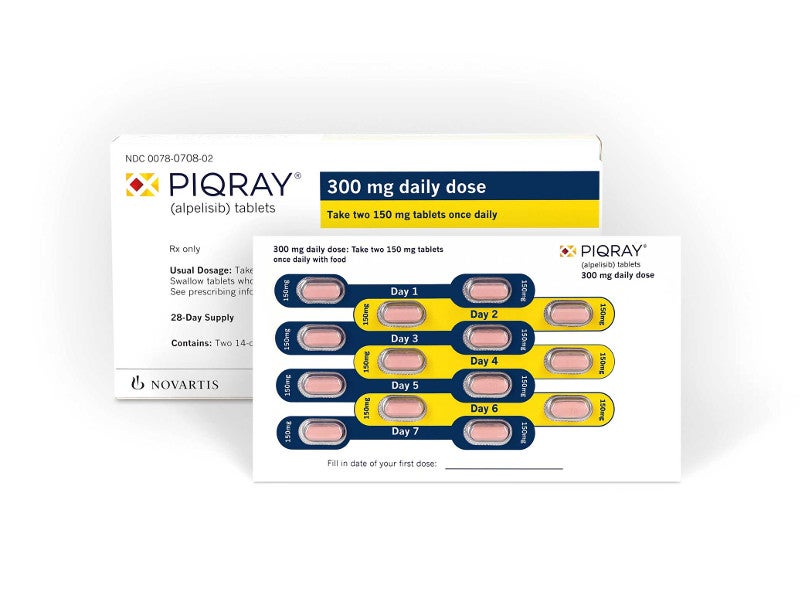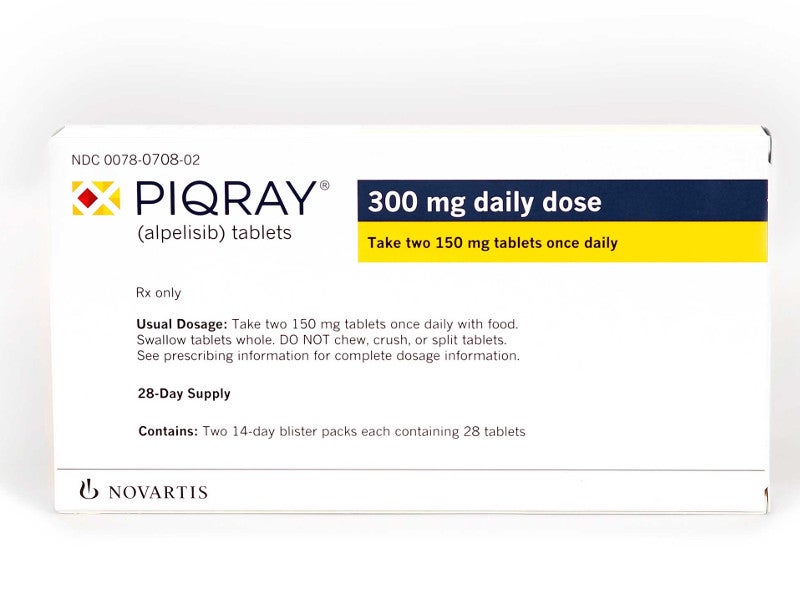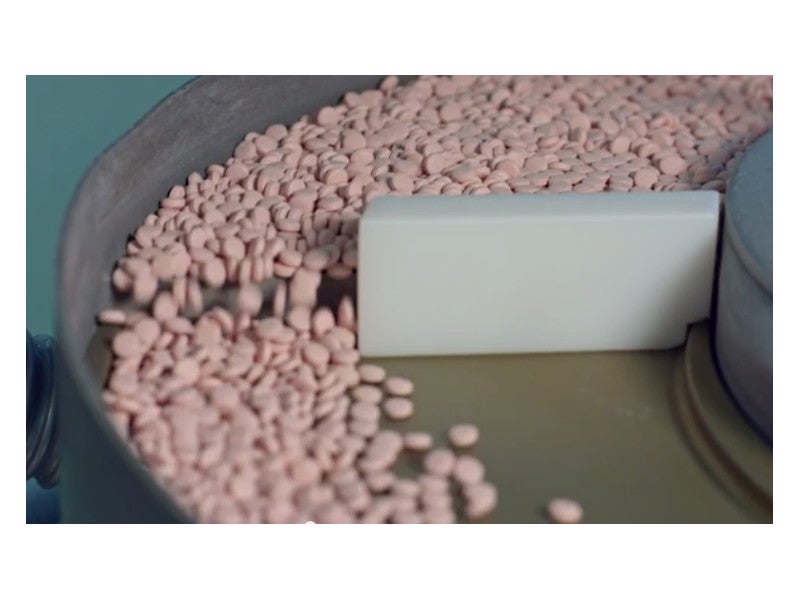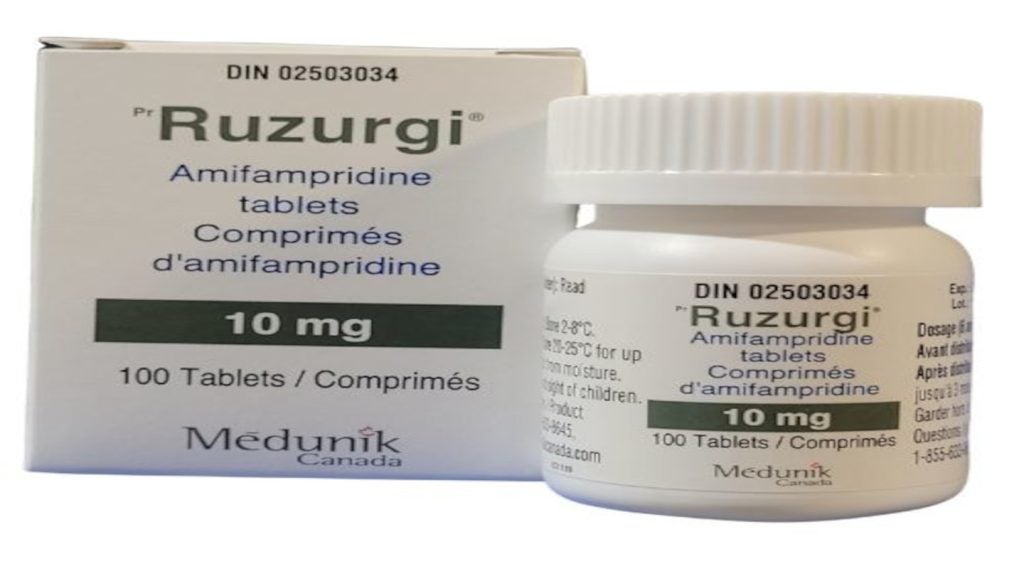Piqray® (alpelisib) is a kinase inhibitor indicated for the treatment of hormone receptor (HR) positive or HER2-negative advanced breast cancer with PIK3CA mutation in men and post-menopausal women.
Developed by Novartis, Piqray is one of the first PI3K inhibitors to be approved for the condition.
The drug is administered in combination with fulvestrant to patients that have been identified as having the PIK3CA-mutation using the therascreen PIK3CA RGQ PCR Kit, a US Food and Drug Administration (FDA) approved diagnostic test.
Novartis submitted a new drug application (NDA) for alpelisib to the FDA in December 2018. The FDA processed the drug under priority review status and granted approval in May 2019, making it one of the first combination products to be approved under the FDA Oncology Centre of Excellence Real-Time Oncology Review pilot programme.
Piqray® is available as an oral, unscored, film-coated tablet in 50mg, 150mg and 200mg strengths. The 50mg tablet is round-shaped with a light pink colour. The 150mg and 200mg versions are oval-shaped tablets coloured pale red and light red, respectively.
Breast cancer causes and symptoms
Breast cancer originates due to the uncontrolled growth of breast cells.
The HER2 gene encodes for HER2 proteins, which are responsible for the growth and survival of healthy breast cells. A faulty HER2 gene causes abnormal breast cell growth in patients.
Patients are diagnosed as HER2-negative if the HER2 proteins do not play any role in the development of cancer. A patient is diagnosed as HR-positive if they are tested positive for HRs such as estrogen receptors (ER) or progesterone receptors (PR).
Mutations in the PIK3CA gene in HR-positive or HER2-negative breast cancer patient is one of the most common causes of tumour growth and endocrine treatment resistance. Approximately 40% of the HR-positive or HER2-negative breast cancer patients have PIK3CA mutation worldwide.
Some common symptoms of the disease include a lump in the breast, redness of the skin, change in the shape or size of the breast, and flaking around the nipple in the pigmented area.
Piqray’s mechanism of action
Piqray is an alpha-specific phosphatidylinositol-3- kinase (PI3K) inhibitor. Mutation in the gene encoding for the catalytic α-subunit of PI3K (PI3KCA) causes activation of PI3Kα and Akt-signalling pathway leading to tumour generation.
Piqray inhibits the PI3KCA mutation effects and blocks the PI3Kα and Akt-signalling pathway, while overcoming endocrine treatment resistance in HR-positive advanced breast cancer patients.
PI3K inhibition has shown to induce ER transcription increase in breast cancer cells. Piqray plus fulvestrant demonstrated anti-tumour activity in the tumour xenograft models of ER-positive, PIK3CA-mutated cell lines.
Clinical studies on Piqray
The FDA’s approval of Piqray was based on the positive results of a Phase III, randomised, placebo-controlled clinical study named SOLAR-1. A total of 572 patients with HR-positive, HER2-negative advanced breast cancer were enrolled in the trial to be tested with either Piqray or placebo along with fulvestrant.
Out of the 572 patients, 341 were PI3KCA-mutated. The primary endpoint of the study was progression-free survival (PFS) in PI3KCA-mutated patients.
The PFS in patients receiving Piqray plus fulvestrant almost doubled to 11 months compared to 5.7 months in patients receiving placebo plus fulvestrant. The overall response rate (ORR) in patients receiving Piqray plus fulvestrant was 35.7% compared to 16.2% in those receiving placebo plus fulvestrant.
The most common adverse events (AE) reported in patients during the clinical trials were a decrease in lymphocyte count, haemoglobin and calcium; weight loss; diarrhoea; vomiting; stomatitis; prolonged activated partial thromboplastin time (aPTT); and alopecia.










